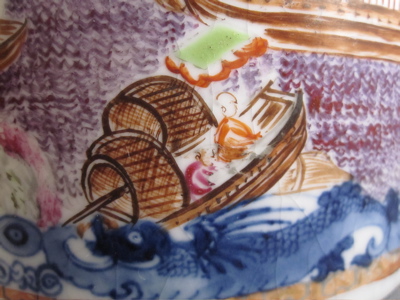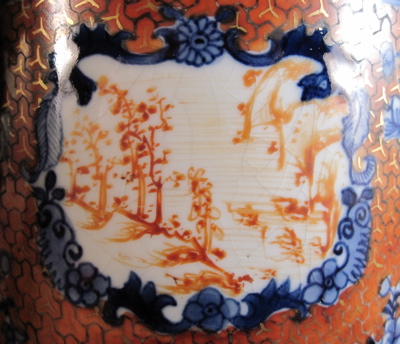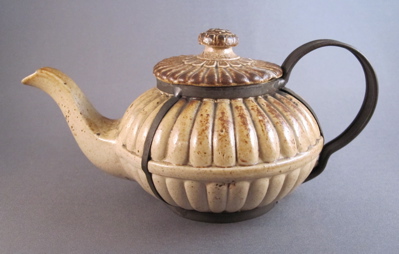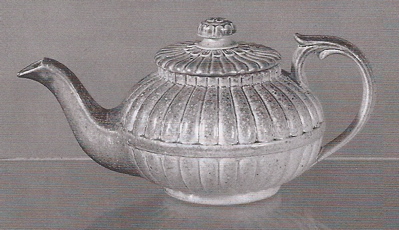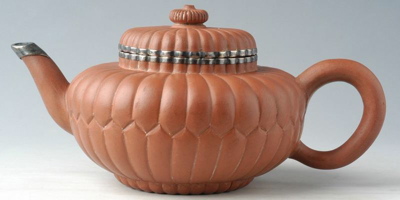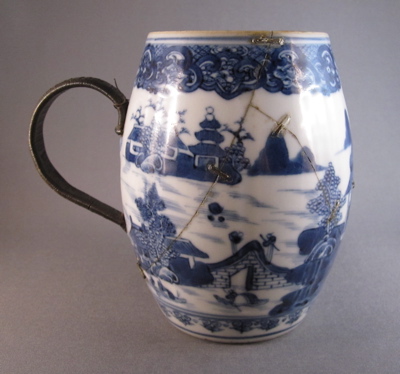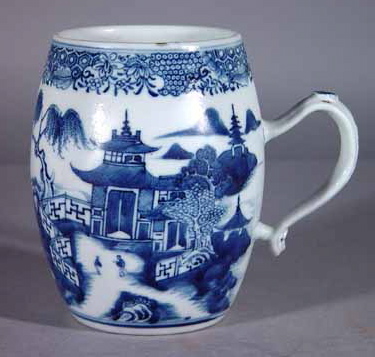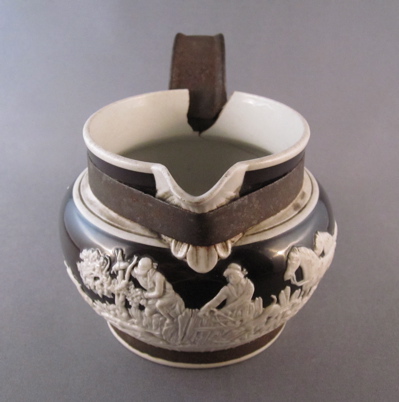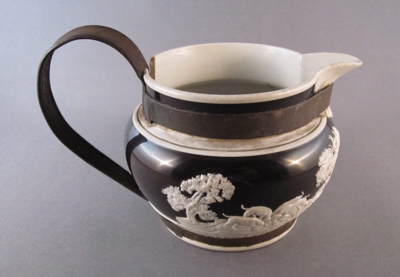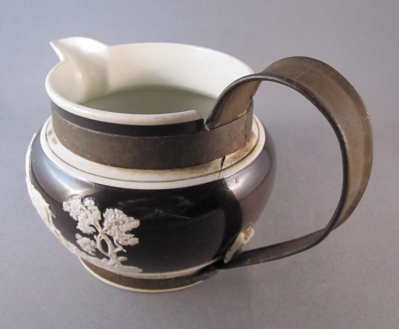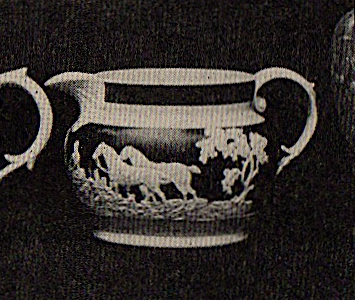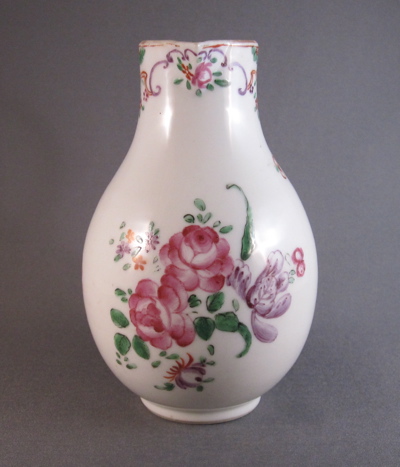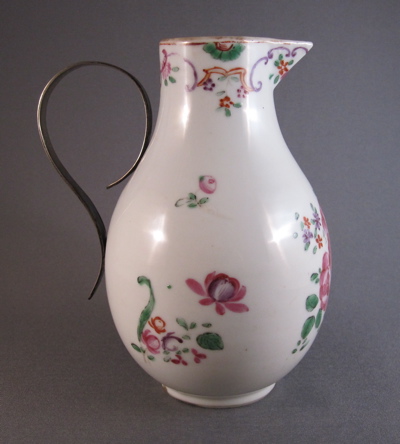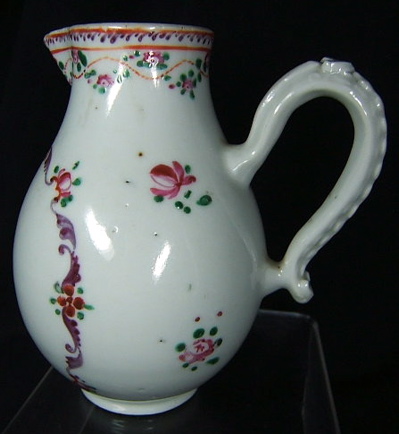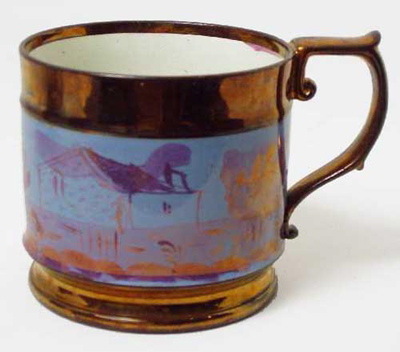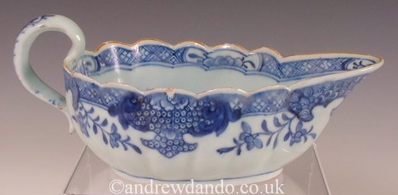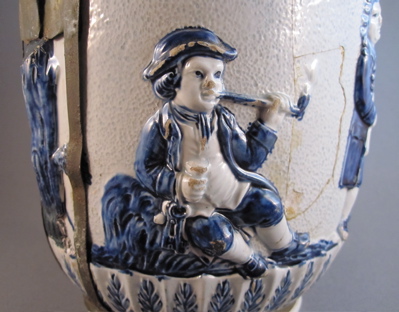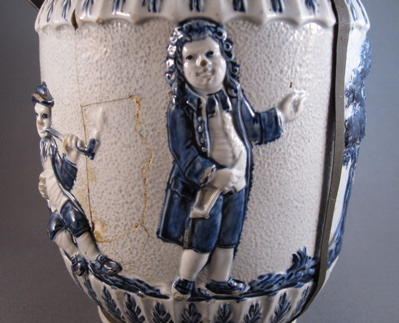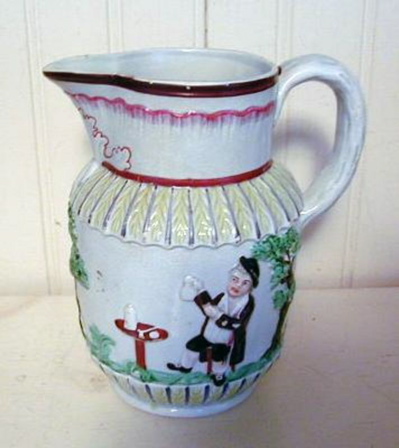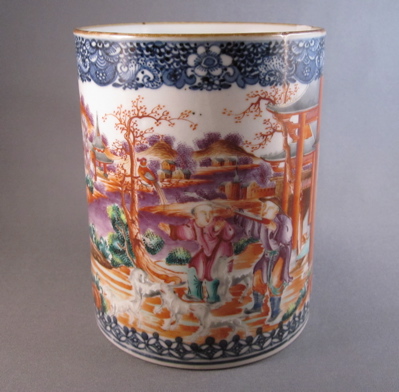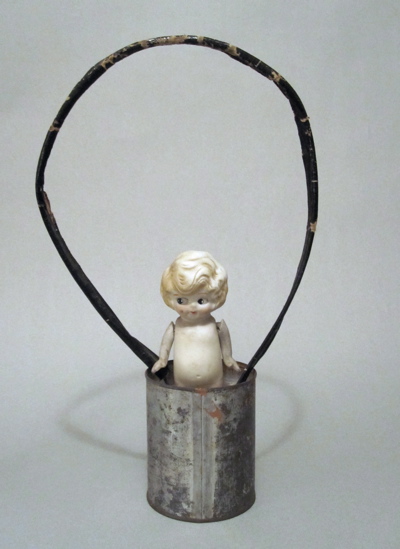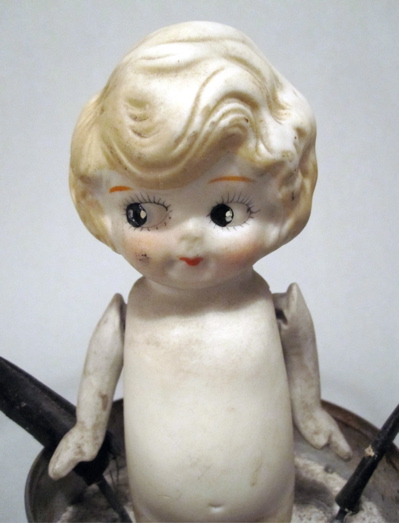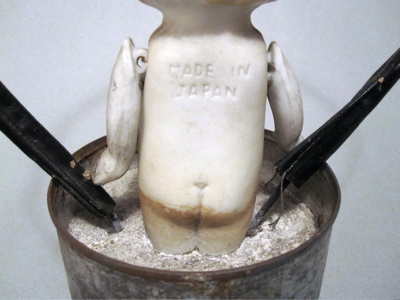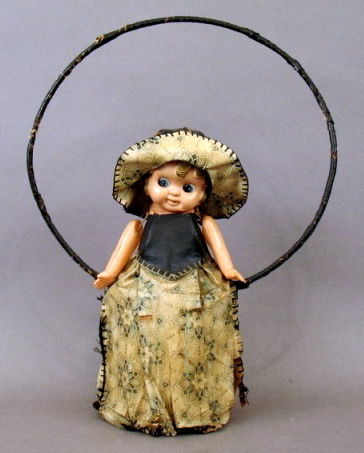I seem to have many Chinese export mugs in my collection, including this large one with an intricately painted Mandarin port scene. I purchased this, along with another large mug, in London last year.
I love the stylized cobalt blue underglaze border along the rim and the beautiful colors of the famille rose palette, highlighted with gilt detailing.
Mug proudly stands 6-1/4″ high and is 5-1/4″ in diameter.
It is possible that the fine rope covering on the bronze replacement handle was itself replaced, after a more typical rattan covering wore out over many years of use.
The bottom of the mug has an early hand painted “25” mark, possibly a dealer’s price or inventory number.
This mug with similar form and decoration still has its original porcelain handle intact.
Photo courtesy of Mimi’s Antiques


